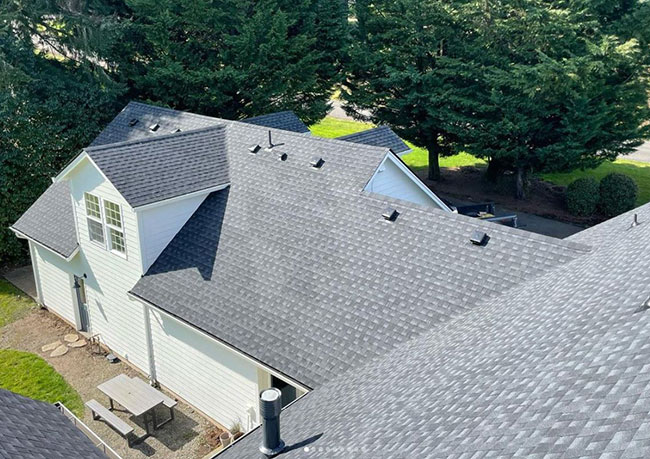Many homeowners often find themselves unaware of the specifics of their insurance policy until an unfortunate event occurs. It is crucial to have a comprehensive understanding of the different types of policies available and their coverage details, especially when it comes to roof damage and repairs. Insurance policies can vary significantly, with some offering extensive coverage that includes a wide range of events and perils, while others may only cover specific circumstances. By familiarizing yourself with the nuances of your insurance policy, you can ensure that you are adequately protected and prepared for any unforeseen situations that may arise.
Types of Homeowners Policies
Homeowners insurance policies can be divided into several categories, each offering different levels of coverage to meet the specific needs of homeowners. These types include HO-1 (Basic Form), HO-2 (Broad Form), HO-3 (Special Form), and HO-8 (Modified Coverage Form).
The HO-1 policy provides basic coverage for specific perils such as fire and theft, while the HO-2 policy offers broader coverage for additional perils like vandalism and falling objects. The HO-3 policy, considered the most common, provides coverage for all perils unless explicitly excluded. Lastly, the HO-8 policy is designed for older homes and provides modified coverage to account for their unique characteristics.
It’s important for homeowners to carefully review the details of each policy to understand the specific events and perils covered. Some policies may also include coverage for roof repairs or replacement, ensuring that homeowners are protected from unexpected expenses related to their roofs.
What Is Covered for Roof Damage/Repairs
Typically, homeowners insurance provides coverage for roof damage caused by unpreventable incidents such as vandalism or fire. Additionally, many policies also extend coverage to damage caused by severe weather conditions like storms, hail, and strong winds. However, it’s important to note that insurers often exclude coverage for damage resulting from lack of maintenance or general wear and tear, as these are considered to be the responsibility of the homeowner. Therefore, it’s crucial for homeowners to regularly maintain their roofs and address any signs of wear to ensure their insurance coverage remains intact.
Deductibles and Reimbursement Limits
When filing a claim for roof damage, you’ll be required to pay a deductible, which is the amount you need to contribute before your insurance company covers any costs. The specific amount of your deductible will vary based on the details of your policy. It’s important to note that different insurance policies may have limits on the maximum reimbursement for roof repairs or replacement, so it’s advisable to review your policy to understand these details thoroughly. By having a clear understanding of your deductible and policy limits, you can better navigate the process and ensure you’re adequately covered in case of roof damage.
Common Causes of Roof Damage
The most common causes of roof damage include severe weather events such as storms and hail, which can result in broken or missing shingles, leaks, and structural issues. However, it’s important to note that aging materials and normal wear and tear can also play a significant role in the deterioration of a roof over time. Factors such as exposure to UV rays, temperature fluctuations, and improper installation can gradually weaken the roofing components, leading to reduced durability and potential damage. It’s crucial to regularly inspect and maintain your roof to prevent any issues from escalating and ensure its longevity.
Filing an Insurance Claim
When you discover roof damage, the first step is usually to get an inspection and damage assessment. A professional roofing contractor will thoroughly examine your roof to determine the extent of the damage, identifying any areas that require immediate attention. Once the assessment is complete, the contractor can provide you with detailed estimates for the necessary repairs or replacements. After you have obtained the estimates, the claims process with your insurer will commence. It is important to promptly notify your insurance company about the damage and provide them with the necessary documentation, such as the inspection report and estimates. This will help expedite the claims process and ensure that you receive the appropriate coverage.
Additionally, there are steps you can take to speed things along during the claims process. Maintaining clear and open communication with your insurance adjuster, promptly providing any requested information or documentation, and following up on the progress of your claim can help ensure a smooth and efficient resolution.
Remember, addressing roof damage promptly is crucial to prevent further issues and protect your home. By taking the necessary steps and working closely with roofing professionals and your insurance company, you can navigate the claims process and restore your roof’s integrity.
Preventing Future Damage
When it comes to roof damage, it is always better to prevent rather than cure. By regularly conducting maintenance and inspections, you can proactively identify potential problems early on. Additionally, consider upgrading your roof materials to more durable options and implementing measures to safeguard against weather extremes such as storms and harsh sunlight. These proactive steps will not only extend the life of your roof but also provide added protection and peace of mind for years to come.
Reducing Your Insurance Rates
Finally, there are several ways you can reduce your insurance rates. Maintaining a clean claims record, implementing loss prevention strategies, and installing safety features can all contribute to lower rates. Additionally, bundling policies with the same insurer can often result in discounts. Proper roof maintenance and repairs can also help lower rates by reducing the likelihood of future claims.
To sum it up, when it comes to insurance and your roof, knowledge is key. Understanding your coverage options, taking prompt action in case of damage or disaster, and being proactive with maintenance can all contribute to a smooth claims process and peace of mind for homeowners. By working closely with your insurance agent and reputable roofing company , you can protect and maintain one of the most important parts of your home. Don’t wait until disaster strikes, take action now to ensure the safety and integrity of your roof.


